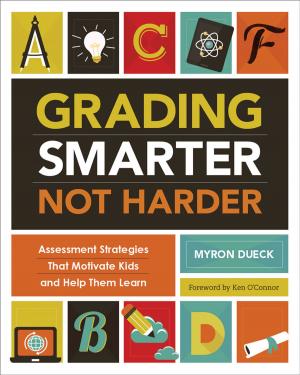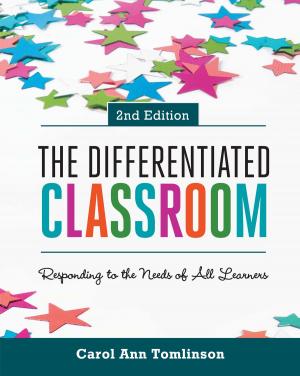Learning Targets
Helping Students Aim for Understanding in Today's Lesson
Nonfiction, Reference & Language, Education & Teaching, Administration| Author: | Connie M. Moss, Susan M. Brookhart | ISBN: | 9781416614814 |
| Publisher: | ASCD | Publication: | July 2, 2012 |
| Imprint: | ASCD | Language: | English |
| Author: | Connie M. Moss, Susan M. Brookhart |
| ISBN: | 9781416614814 |
| Publisher: | ASCD |
| Publication: | July 2, 2012 |
| Imprint: | ASCD |
| Language: | English |
In Learning Targets, Connie M. Moss and Susan M. Brookhart contend that improving student learning and achievement happens in the immediacy of an individual lesson--what they call "today's lesson"—or it doesn't happen at all.
The key to making today's lesson meaningful? Learning targets. Written from students' point of view, a learning target describes a lesson-sized chunk of information and skills that students will come to know deeply. Each lesson's learning target connects to the next lesson's target, enabling students to master a coherent series of challenges that ultimately lead to important curricular standards.
Drawing from the authors' extensive research and professional learning partnerships with classrooms, schools, and school districts, this practical book
- Situates learning targets in a theory of action that students, teachers, principals, and central-office administrators can use to unify their efforts to raise student achievement and create a culture of evidence-based, results-oriented practice.
- Provides strategies for designing learning targets that promote higher-order thinking and foster student goal setting, self-assessment, and self-regulation.
- Explains how to design a strong performance of understanding, an activity that produces evidence of students' progress toward the learning target.
- Shows how to use learning targets to guide summative assessment and grading.
Learning Targets also includes reproducible planning forms, a classroom walk-through guide, a lesson-planning process guide, and guides to teacher and student self-assessment.
What students are actually doing during today's lesson is both the source of and the yardstick for school improvement efforts. By applying the insights in this book to your own work, you can improve your teaching expertise and dramatically empower all students as stakeholders in their own learning.
In Learning Targets, Connie M. Moss and Susan M. Brookhart contend that improving student learning and achievement happens in the immediacy of an individual lesson--what they call "today's lesson"—or it doesn't happen at all.
The key to making today's lesson meaningful? Learning targets. Written from students' point of view, a learning target describes a lesson-sized chunk of information and skills that students will come to know deeply. Each lesson's learning target connects to the next lesson's target, enabling students to master a coherent series of challenges that ultimately lead to important curricular standards.
Drawing from the authors' extensive research and professional learning partnerships with classrooms, schools, and school districts, this practical book
- Situates learning targets in a theory of action that students, teachers, principals, and central-office administrators can use to unify their efforts to raise student achievement and create a culture of evidence-based, results-oriented practice.
- Provides strategies for designing learning targets that promote higher-order thinking and foster student goal setting, self-assessment, and self-regulation.
- Explains how to design a strong performance of understanding, an activity that produces evidence of students' progress toward the learning target.
- Shows how to use learning targets to guide summative assessment and grading.
Learning Targets also includes reproducible planning forms, a classroom walk-through guide, a lesson-planning process guide, and guides to teacher and student self-assessment.
What students are actually doing during today's lesson is both the source of and the yardstick for school improvement efforts. By applying the insights in this book to your own work, you can improve your teaching expertise and dramatically empower all students as stakeholders in their own learning.















